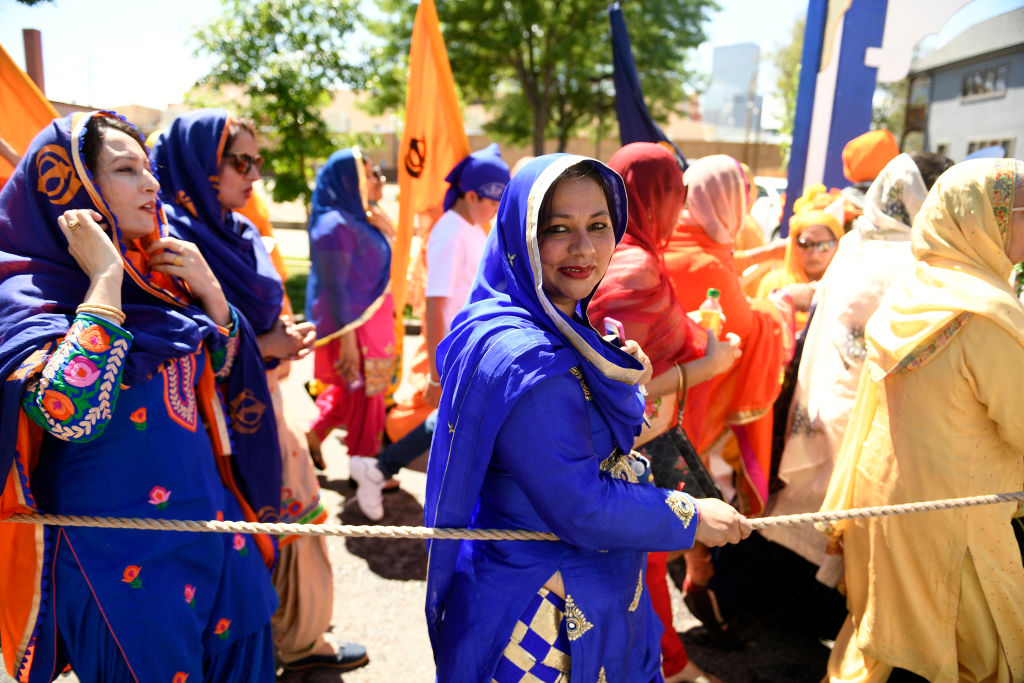With the passing of the Violence Against Women Act, the time has come to implement protections without racial or cultural bias.

Violence Against Women Act (VAWA) 2022, finally signed into law last month after delays that should never have occurred in the first place, promises to allocate more resources to historically underserved communities in order to address gender-based violence. This welcome commitment will only be actualized through support for and humble solidarity with under-resourced grassroots initiatives that were created by, and operate within, our communities.
For too long, the “culturally specific services” that VAWA undertakes to strengthen have rested on assumptions that some cultures act as an additional barrier for victim-survivors of violence. Our community-based and largely community-funded gender justice organization, Sikh Family Center, stands as one testament to the fact that cultural communities have also for long been at the forefront of interrupting cycles of violence.
For too many women, violence is part of everyday lived reality. It is essential, however, not to overstate violence as unique only to the (often misunderstood) Sikh community—or any other brown or otherwise marginalized group. In 2017, the most recent national survey conducted by the Sikh Family Center, for which I serve as the executive director, showed that the statistics in our community mirror those nationwide: One in four women on average reported being victimized within their own homes.
We collect data to inform our program priorities including our collaborative work with faith centers, gurdwaras. We do not use statistics to further stigmatize; “showing the community the mirror” has never been an end in itself. Importantly, one in four women in our community must not be thought of as “poor victims” or “disempowered women”: Depersonalized and decontextualized data do not capture how each victim-survivor has their unique needs, priorities and strengths with which they navigate dangerous situations.
It is a horrific, nationwide reality that, on average, 11 murder-suicides occur every single week in the United States. Yet when one of those terrible tragedies occurs in minority groups like the Sikh community, there is often a rush to suggest that something about Sikh culture contributed to the violence. Reporters, government officials, and others in the public space look for soundbites that implicate “Sikh culture” and “Sikh religious views” in these tragic cases.
After such events, outsiders never see how our organization’s helpline is inundated with not just survivors in need of support, but also individuals worried that our entire community would experience ‘bad press’ and further stereotyping on account of the crime. Juggling multiple burdens of representation and misrepresentation, internal and external, is not new to people of color working to address inequity and violence within the communities we refuse to hate or alienate.
In average, 11 murder-suicides occur every single week in the U.S. Yet when one of those terrible tragedies occurs in minority groups like the Sikh community, there is often a rush to suggest that something about Sikh culture contributed to the violence.
True allyship and movement-building is often slow and complicated, even within the same ethnic community. Take the Sikh women’s meeting we attended where one woman stated, visibly shaken, “Our gurdwaras are just unsafe places.” The rest of the group became immediately ignited in their responses. For many, hearing about gurdwaras, Sikh faith centers, as “unsafe” was itself deeply disrespectful; for others, the personal disrespect, disregard, even discrimination faced at gurdwaras resonated deeply.
How did the few of us who had then recently convened the Sikh Family Center respond? We listened. We have always understood that many grays exist in our community, and that while gurdwaras are in theory and in practice places of beautiful community for many, they have also been places of harsh exclusion for others. In addressing these contradictions, however, one thing remains clear: We refuse to operate from a place of hate, for ourselves or for others.
Instead, we continue to work directly with gurdwaras, respecting their role as faith centers and also insisting they, like all of us, urgently do better to address violence and make our communities safer. Exactly a year ago, on the most significant Sikh holiday celebrated around the world in April, Vaisakhi, we launched a Family Violence Resource Guide for gurdwaras, a culturally-specific education and early intervention tool, to help gurdwara staff and leadership better support survivors who come forward.
In designing this tool, we interviewed various men working in gurdwaras across the country; over the years, some of these men had been life-saving liaisons between victims and the Sikh Family Center. Now this unique Gurdwara Guide encourages more such allies, who walk the Sikh talk of equity. It is tailored to our community’s literal language but also reflects our community’s figurative expression, trauma history and life experience.
The complex issues at play around how identity is publicly and privately understood require us to continuously check our own biases, too. Even coming from within the community, when we first organized in 2009-10, we conducted community-based research, anonymous surveys, focus groups and listening sessions.
In Sikh Family Center’s experience, truly community-rooted “culturally specific services” recognize that victim-survivors within the same community can make a range of different choices. Some seek legal intervention, others refuse it. Some seek people who share their ethnic background, others prefer to speak with someone outside their ethnic background, and still others may change their mind about who they seek support from based on how systems, including police, courts, as well as nonprofits, respond to their experience.
If we’ve seen a nonprofit leader refer to all turban-wearing men as “conservative and unaccepting of the real issues,” we’ve also seen turbaned gurdwara leaders work with domestic violence shelters to help them make appropriate accommodations for Sikhs seeking safety.
We have observed a wide range of responses from inside and outside of our community underscoring this point. If we’ve heard a white therapist in California say that “obviously no one in your community will want to assist a gay rape survivor,” we’ve also heard an East Coast lawyer taking a complicated custody case pro bono because she was so moved by a community where “complete strangers kept rushing to help this young mom.”
If we’ve seen a nonprofit leader refer to all turban-wearing men as “conservative and unaccepting of the real issues,” we’ve also seen turbaned gurdwara leaders work with domestic violence shelters to help them make appropriate accommodations for Sikhs seeking safety while also wearing their articles of faith. And if we’ve worked with a volunteer who told us that staff at a certain South Asian agency claim that “the way Sikhs beat their wives, no one else does,” we’ve also worked with other South Asian agencies that do life-saving work for Sikh and non-Sikh survivors on the daily.
On the whole, this varied experience has moved us well-beyond romanticizing any one kind of solution, legal or non-legal. VAWA 2022’s legal commitment to fund culturally-specific services must not be restricted to community self-flagellation, but rather support self-reflection and quests for self-empowerment. And everyone in this broader field can do their part to help by refusing to sensationalize domestic violence within our community or treat it as “other.”
Time and again, I have found myself having to articulate to reporters, would-be allies and others that domestic violence is obviously abhorrent, and nothing in Sikhi allows for it. Each time I do so, I feel smaller and disrespected. But I feel larger every day being part of the story of community change that is led with love.
For the implementation of VAWA to truly meet the challenges of all people affected by gendered violence in 2022, it must openly examine layered biases faced by minority and minoritized cultural groups and provide real support to grassroots initiatives.
Up next:





